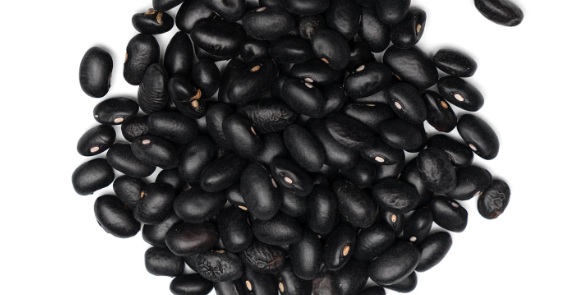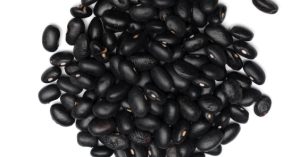
Last Updated on February 20, 2023 by Edible Alchemy Foods
Black turtle beans and black beans are two of the most commonly used legumes in many cuisines around the world. Both are high in protein and fiber and packed with essential vitamins and minerals. While they are both dark-colored beans, they have some distinct differences that make them unique. In this article, we will explore the differences between black turtle beans and black beans to help you choose which is best for your recipe.
Exploring the Nutritional Differences Between Black Turtle Beans and Black Beans

Black Turtle Beans

Black Beans
When it comes to healthy eating, there are many bean varieties to choose from. Black turtle beans and black beans are two popular options, but many people do not know the nutritional differences between them. To make the most informed decision for your diet, it is important to understand the nutritional breakdown of each bean.
Both black turtle beans and black beans are good sources of fiber, vitamins, and minerals. However, black turtle beans contain more fiber, with 16.2 grams per cup compared to 15.2 grams per cup for black beans. Additionally, a cup of black turtle beans contains more thiamin, riboflavin, niacin, and folate than a cup of black beans.
On the other hand, black beans contain more protein than black turtle beans, with 9 grams per serving on average compared to 8 grams per serving for black turtle beans. Black beans are also a good source of iron, zinc, potassium, selenium, and Vitamin D, with 110 calories per serving on average.
Both black turtle beans and black beans are nutritious and healthy food options. The choice between the two may come down to personal preference or the specific nutritional needs of an individual.
Cooking with Black Turtle Beans vs Black Beans: A Comparison of Recipes
When it comes to cooking with black turtle beans and black beans, both can be used interchangeably in many recipes. However, there are some differences in texture and cooking time that may affect the final dish.
Cooked black beans are generally softer than black turtle beans. Black turtle beans are denser and tend to retain their firmness more during cooking. Therefore, if you are looking for a bean that will hold its shape well in a recipe, such as a salad or stew, black turtle beans may be a better option. On the other hand, if you prefer a creamier texture, black beans may be a better choice.
In terms of recipes, black turtle beans and black beans can be used in a variety of dishes, including soups, stews, salads, dips, and more. For example, black beans are commonly used in Latin American cuisine, such as in black bean soup, while black turtle beans are often used in Caribbean and South American dishes, such as in rice and beans.
To cook either type of bean, it is recommended to soak them overnight before cooking. This can help to reduce cooking time and improve digestibility. The cooking time for black turtle beans is generally longer than black beans due to their denser texture.
Overall, black turtle beans and black beans are versatile ingredients that can be used in many recipes. The choice between the two may come down to personal preference or the specific needs of a recipe.
The History and Origins of Black Turtle Beans and Black Beans
Black Turtle beans and black beans are a type of legume that have been a staple of many cultures for centuries. They are native to the Americas and were first cultivated in pre-Columbian Central and South America. The beans were introduced to Europe in the 16th century by Spanish explorers, and they quickly spread throughout the world.
Black Turtle beans and black beans are a type of common bean, which is a member of the Phaseolus vulgaris species. The beans can be found in a wide variety of colors, including black, white, yellow, pink, and purple. The black variety is often referred to as “Turtle beans” due to their shape and size, which resembles a turtle shell.
Black Turtle beans and black beans have long been a staple of both Latin American and Caribbean cuisines. The beans are high in fiber, protein, and complex carbohydrates. They are a great source of iron, folate, and other vitamins and minerals. They are also low in fat and calories, making them a nutritious and filling addition to any diet.
The flavor of Black Turtle beans and black beans is earthy and nutty, with a slightly sweet taste. They are often used in soups, stews, chilies, salads, and rice dishes. They can also be cooked as a side dish or mashed and used as a dip.
Black Turtle beans and black beans have been a staple of many cultures for centuries, and they are still highly valued today for their flavor, nutrition, and versatility. Their flavor, texture, and nutritional value make them an excellent addition to any dish.
Comparing the Health Benefits of Black Turtle Beans and Black Beans
Black turtle beans and black beans are both highly nutritious and provide a range of health benefits. Here’s a comparison of the health benefits of these two beans based on the provided web search results:
- Fiber: Both black turtle beans and black beans are excellent sources of fiber, which is important for digestive health and can help to lower cholesterol levels. However, black turtle beans contain slightly more fiber, with 16.2 grams per cup compared to 15.2 grams per cup for black beans.
- Protein: Both black turtle beans and black beans are good sources of plant-based protein, which is important for building and repairing tissues in the body. Black beans contain slightly more protein, with 9 grams per serving compared to 8 grams per serving for black turtle beans.
- Vitamins and minerals: Both black turtle beans and black beans are rich in vitamins and minerals, including thiamin, riboflavin, niacin, and folate. However, black turtle beans contain slightly higher levels of these nutrients compared to black beans.
- Antioxidants: Black turtle beans are particularly high in antioxidants, which can help to protect against oxidative damage in the body. Antioxidants in black turtle beans include anthocyanins, which give the beans their dark color, and flavanols.
- Blood sugar control: Both black turtle beans and black beans have been shown to help regulate blood sugar levels, which is important for managing diabetes and reducing the risk of other chronic diseases. This may be due to their high fiber content and low glycemic index.
Conclusion
In conclusion, black turtle beans and black beans are two distinct types of beans with their own unique characteristics. Black turtle beans have a richer, earthy flavor and offer a firmer texture, while black beans are sweeter and softer. Depending on the recipe and desired result, either type of bean could be a suitable choice for a given dish. However, black turtle beans may be a better option for recipes that require a more robust flavor and texture.










